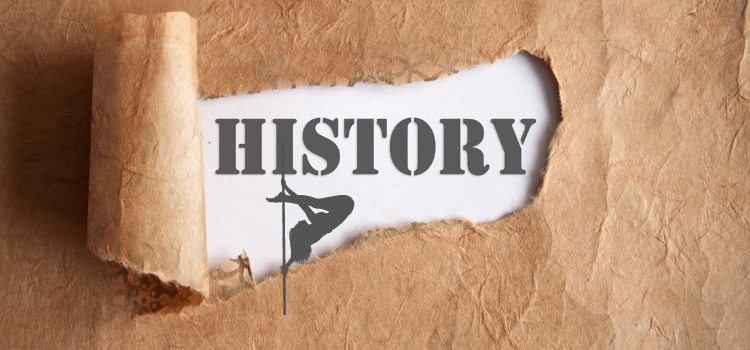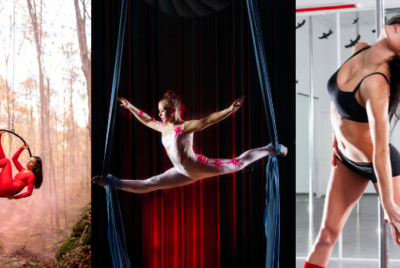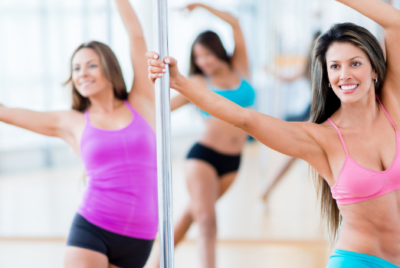History of Pole Dancing: Ancient Roots to Modern Empowerment
Pole dancing, a captivating blend of acrobatics, dance, and fitness, has a rich and intriguing history that spans centuries. As an enthusiast and advisor in the world of pole dancing, I am delighted to share the fascinating story behind this art form and offer helpful suggestions for those interested in exploring this empowering activity.
Introduction to Pole Dancing
Pole dancing is an exhilarating form of movement that involves performing intricate spins, tricks, and transitions on a vertical pole. While commonly associated with strip clubs, pole dancing has evolved into a respected art form and fitness activity embraced by people of all genders and backgrounds.
The Origins of Pole Dancing
Ancient Roots: The roots and history of pole dancing can be traced back to ancient cultures. In India, the art of Mallakhamb, which involves performing gravity-defying stunts on a pole, dates back over 800 years. Similarly, Chinese pole acrobatics, known as Jìng Pó, has been practised for centuries, showcasing incredible strength and agility.
Circus and Vaudeville Influence: During the 19th and early 20th centuries, pole dancing found its place in the world of circus and vaudeville. Performers would incorporate pole tricks and dance elements into their acts, captivating audiences with their grace and athleticism.
Evolution of Pole Dancing in Modern Times: In the 1980s, pole dancing experienced a resurgence as performers began integrating elements of striptease into their routines. The sensual and expressive nature of the dance captivated audiences, leading to its association with adult entertainment establishments. However, it’s important to recognize that pole dancing has evolved beyond these origins and has gained recognition as a legitimate art form and fitness activity.
Pole Dancing as a Fitness Activity
Pole dancing has emerged as an incredibly effective and enjoyable fitness activity, offering a plethora of physical and mental benefits.
Physical Benefits of Pole Dancing: Engaging in regular pole dancing workouts can lead to improved strength, flexibility, and body tone. The dynamic movements involved, such as climbing, spinning, and inverting, work various muscle groups, providing a full-body workout. Additionally, the cardiovascular component of pole dancing helps enhance stamina and endurance.
Emotional and Mental Benefits of Pole Dancing: Beyond its physical benefits, pole dancing also nurtures emotional and mental well-being. The combination of physical exertion and artistic expression releases endorphins, promoting a sense of joy and confidence. Pole dancing offers a space for self-expression, enabling individuals to explore their creativity and build self-esteem.
Pole Dancing as an Art Form
More and more people are seeing pole dancing as a beautiful and expressive art form that allows individuals to communicate their emotions and tell stories through movement.
Expressing Creativity through Movement: Pole dancing provides a unique platform to express creativity and individuality. Dancers can incorporate different styles, musicality, and props into their routines, creating captivating performances that reflect their personal artistic vision.
Choreography and Performance: Crafting choreography and performing routines is an integral part of pole dancing. The process of developing a routine involves selecting movements, transitions, and music that harmoniously blend together. Through performance, dancers captivate their audience, evoke emotions, and inspire others.
The Rise of Competitive Pole Dancing
In recent years, competitive pole dancing has gained significant traction, providing a platform for pole athletes to showcase their skills and artistic abilities.
International Pole Sports Federation (IPSF): The International Pole Sports Federation (IPSF) has played a pivotal role in shaping the competitive aspect of pole dancing. It has established standardised rules and regulations, emphasising safety, fairness, and technical proficiency.
Pole Dancing Competitions: Pole dancing competitions bring together performers from around the world, offering a stage to display their talent and compete for prestigious titles. These events celebrate the athleticism, artistry, and innovation within the pole dancing community.
Breaking Stereotypes and Empowering Women
Pole dancing has been instrumental in challenging societal stereotypes and empowering women.
Overcoming Stigma: Pole dancing has long been burdened with stigma due to its association with strip clubs. However, societal perspectives are shifting, leading to a greater acceptance and appreciation of the intersection between pole dancing and strip clubs.
In recent years, there has been a growing understanding that pole dancing encompasses more than its adult entertainment origins. It embraces a wide range of expression, empowerment, and physical fitness. By acknowledging and embracing the connection between pole dancing and strip clubs, we can challenge stereotypes and break down barriers.
It is crucial to recognise the diverse skills, creativity, and self-confidence that both professional dancers and enthusiasts bring to the pole dancing community, regardless of the environment in which they perform. By fostering open-mindedness, education, and inclusive discussions, we can overcome the stigma associated with this connection.
Through this inclusive mindset, we empower individuals to embrace the full spectrum of pole dancing, appreciate its artistry, and recognise the contributions made by performers from all backgrounds.
Promoting Body Positivity: One of the remarkable aspects of pole dancing is its inclusive nature. It promotes body positivity by embracing diverse body shapes, sizes, and abilities. Through pole dancing, individuals can cultivate a positive body image and develop a sense of acceptance and appreciation for their own bodies.
Safety Considerations in Pole Dancing
While pole dancing can be an exhilarating activity, safety should always be a priority.
Proper Warm-up and Conditioning: Before engaging in any pole dancing activities, it is essential to warm up adequately to prepare the body for the physical demands. Incorporating stretching exercises and conditioning routines helps prevent injuries and improves overall performance.
Equipment and Safety Measures: Using a sturdy and reliable pole that can support your weight is crucial. It’s recommended to invest in a professional-grade pole designed specifically for pole dancing. Additionally, ensuring a safe environment by removing any obstacles and maintaining proper floor grip significantly reduces the risk of accidents.
Getting Started with Pole Dancing
If you’re intrigued by the world of pole dancing and eager to give it a try, here are some essential steps to get started:
Choosing the Right Pole: Selecting a suitable pole for your practice is vital. Consider factors such as static or spinning functionality, grip options, and installation requirements. Consulting with experts or seeking advice from experienced pole dancers can help you make an informed decision.
Finding a Qualified Instructor: To learn pole dancing safely and effectively, it’s highly recommended to find a qualified instructor or attend classes at a reputable pole dancing studio. A skilled instructor will guide you through proper techniques, provide personalised feedback, and ensure your progress in a supportive environment.
Setting Realistic Goals: Setting realistic goals is essential to stay motivated and track your progress. Whether it’s mastering a specific move, improving strength, or participating in a performance, setting achievable goals will keep you focused and inspired throughout your pole dancing journey.
Maintaining Progress and Enjoyment
To make the most of your pole dancing experience, it’s important to establish a consistent practice routine. It is also important to explore different styles and techniques.
Regular Practice and Training: Consistency is key when it comes to pole dancing progress. Engage in regular practice sessions to reinforce your skills, build strength, and improve flexibility. Remember that progress takes time, and patience is key to achieving your desired goals.
Exploring Different Pole Dancing Styles: Pole dancing offers a vast array of styles, each with its own unique characteristics and aesthetics. Explore various styles, such as contemporary, exotic, or lyrical, to expand your repertoire and discover new ways to express yourself through movement.
Conclusion
The history of pole dancing is a testament to the resilience, creativity, and empowerment it embodies. From its ancient roots to the modern-day evolution as a fitness activity and art form, pole dancing has transcended stereotypes and captivated enthusiasts worldwide. By embracing pole dancing, individuals can unlock their physical and artistic potential, foster self-confidence, and find joy in the transformative power of movement.
FAQs
Q1: Can anyone do pole dancing?
A1: Absolutely! Pole dancing is an inclusive activity suitable for people of various fitness levels, body types, and ages. With proper guidance and practice, anyone can enjoy the benefits of pole dancing.
Q2: Will pole dancing help me get in shape?
A2: Yes, pole dancing offers a comprehensive workout that targets multiple muscle groups and improves cardiovascular fitness. Regular pole dancing practice will contribute to overall strength, flexibility, and toning.
Q3: Is pole dancing only for women?
A3: Not at all! While pole dancing has often been associated with women, it is a practice open to men too. These days there are many men who engage in pole dancing and excel in its artistic and physical aspects.
Q4: Can pole dancing be dangerous?
A4: As with any physical activity, pole dancing carries a potential risk of injury if proper safety precautions are not followed. However, by practising on a secure pole, warming up adequately, and progressing at your own pace, the risk of injury can be minimised.
Q5: How long does it take to become proficient in pole dancing?
A5: The time it takes to become proficient in pole dancing varies depending on individual factors. These factors include natural ability, frequency of practice, and dedication. Progress is a gradual process, and it’s important to enjoy the journey rather than focusing solely on the destination.




